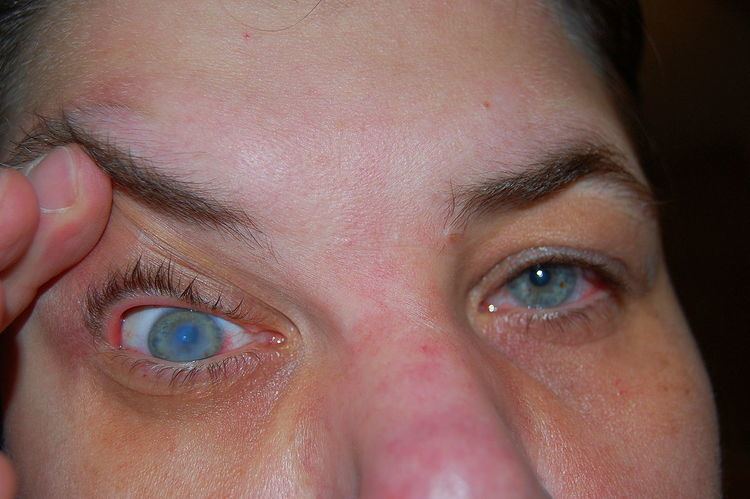 | ||
Corneal hydrops or corneal rupture is an uncommon complication seen in people with advanced keratoconus or other corneal ectatic disorders, and is characterized by stromal edema due to leakage of aqueous humor through a tear in Descemet's membrane. Although a hydrops usually causes increased scarring of the cornea, occasionally it will benefit a patient by creating a flatter cone, aiding the fitting of contact lenses. Corneal transplantation is not usually indicated during corneal hydrops.
Contents
Signs and symptoms
The person experiences pain and a sudden severe clouding of vision, with the cornea taking on a translucent milky-white appearance known as a corneal hydrops.
Management
The effect is normally temporary and after a period of six to eight weeks, the cornea usually returns to its former transparency. The recovery can be aided nonsurgically by bandaging with an osmotic saline solution. Non-steroidal anti-inflammatory topical may be used to reduce the pain and inflammation.
Research
Corneal hydrops might be caused by a tear in the recently discovered Dua's layer, a 15 micron thick layer between the corneal stroma and Descemet’s membrane, Harminder Dua suggests that this finding will affect corneal surgery, including penetrating keratoplasty, and understanding of corneal dystrophies and pathologies, such as acute hydrops.
